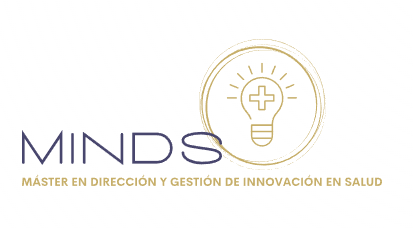El próximo 25 de mayo tendrá lugar la siguiente conferencia dentro del programa Santander Biomedical Lectures organizado por IDIVAL, la Universidad de Cantabria y el IBBTEC, impartida por el Dr. Arturo Álvarez-Buylla, profesor de Neurocirugía en la Universidad de California-San Francisco, especializado en la neurogénesis del cerebro.
La sesión estará centrada en el título “Adult Neural Stem Cells DO NOT Self-Renew Asymmetrically; How are the Retained?”.
 Arturo Álvarez-Buylla is Professor of Neurological Surgery and Heather and Melanie Muss Endowed Chair of the Department of Neurosurgery at the University of California, San Francisco. He is Principal Investigator at the Brain Tumor Research Center and at Álvarez-Buylla Laboratory. Álvarez-Buylla Laboratory is an academic neuroscience research laboratory which is part of the Eli and Edythe Broad Center of Regeneration Medicine at the University of California, San Francisco. The lab is interested in neuronal origin, proliferation, migration, and integration in the adult brain. From 1989 to 2000, Álvarez-Buylla was Assistant Professor and Head of Laboratory at Rockefeller University.
Arturo Álvarez-Buylla is Professor of Neurological Surgery and Heather and Melanie Muss Endowed Chair of the Department of Neurosurgery at the University of California, San Francisco. He is Principal Investigator at the Brain Tumor Research Center and at Álvarez-Buylla Laboratory. Álvarez-Buylla Laboratory is an academic neuroscience research laboratory which is part of the Eli and Edythe Broad Center of Regeneration Medicine at the University of California, San Francisco. The lab is interested in neuronal origin, proliferation, migration, and integration in the adult brain. From 1989 to 2000, Álvarez-Buylla was Assistant Professor and Head of Laboratory at Rockefeller University.
Prof. Álvarez-Buylla has received selected honors and awards: Prince of Asturias Award for Technical and Scientific Research, Fundacion Príncipe de Asturias, Spain. (Shared with Dr. Joseph Altman and Giacomo Rizzolatti) in 2011; American Academy of Arts and Sciences in 2013, Scientific Council of P.K. Anokhin Research Institute of Normal Physiology, Pentennial Medal in 2016, inter alia. He is Professional Membership of the International Society for Stem Cell Research, American Society for Cell Biology and American Academy of Arts and Sciences, etc.
Dr. Alvarez-Buylla has an international reputation for his work in developmental neuroscience and stem-cell neurobiology research. His principal research interests are in neurogenesis of the adult mammalian brain, the assembly of the brain, brain tumors and repair, and the ontogeny and phylogeny of behavior. His expertise encompasses the fields of developmental biology, developmental neuroscience, neurobiology, molecular and cellular neurobiology, and learning and plasticity. An innovator and inventor as well as a scientist, Dr. Alvarez-Buylla has designed a device for mounting tissue sections on histological slides, a digital stereotaxic apparatus for mice and song birds, a computer-based mapping system for tissue sections, and a fluorescent staining technique.
Resumen de la sesión: In many adult mammals, neural stem cells (NSCs) persist in the walls of the lateral ventricle in a germinal niche that preserves key features of the embryonic ventricular zone and a subventricular zone. The primary progenitors (B1 cells) of this adult ventricular-subventricular zone (V-SVZ) have been best studied in mice. B1 cells have astroglial properties and generate, in addition to a small number of oligodendroglia, at least ten different subtypes of inhibitory interneurons that migrate to the olfactory bulb. Interestingly, B1 are not all equal: B1 cells in different sub-regions of the V-SVZ produce different subtypes of interneurons. This regional specification is established very early during embryonic development. Recent findings suggest that B1 cells are derived from RG during mid fetal development and then remain quiescent until re-activated to produce neurons in postnatal life. We have studied the mode of division of B1 cells in juvenile mice. In contrast to current views, we find no evidence for asymmetric division of these primary progenitors. Instead, B1 cells divide symmetrically; most of these divisions are consuming to generate progeny, but a small fraction appears to be self-renewing. Consequently, neurogenesis in the juvenile and adult V-SVZ results in a progressive depletion of the population of B1 cells over time. I will discuss how neurogenesis is maintained for to older ages.
El lugar de la conferencia, que estará abierta a todo el público de Santander que quiera participar, será el Hospital Universitario Marqués de Valdecilla. Salón Téllez Plasencia (Pabellón 16) a las 8.15 horas de la mañana.
Aquellos profesionales que deseen tener una reunión durante su visita puede ponerse en contacto en gesval1@idival.org

 Arturo Álvarez-Buylla is Professor of Neurological Surgery and Heather and Melanie Muss Endowed Chair of the Department of Neurosurgery at the University of California, San Francisco. He is Principal Investigator at the Brain Tumor Research Center and at Álvarez-Buylla Laboratory. Álvarez-Buylla Laboratory is an academic neuroscience research laboratory which is part of the Eli and Edythe Broad Center of Regeneration Medicine at the University of California, San Francisco. The lab is interested in neuronal origin, proliferation, migration, and integration in the adult brain. From 1989 to 2000, Álvarez-Buylla was Assistant Professor and Head of Laboratory at Rockefeller University.
Arturo Álvarez-Buylla is Professor of Neurological Surgery and Heather and Melanie Muss Endowed Chair of the Department of Neurosurgery at the University of California, San Francisco. He is Principal Investigator at the Brain Tumor Research Center and at Álvarez-Buylla Laboratory. Álvarez-Buylla Laboratory is an academic neuroscience research laboratory which is part of the Eli and Edythe Broad Center of Regeneration Medicine at the University of California, San Francisco. The lab is interested in neuronal origin, proliferation, migration, and integration in the adult brain. From 1989 to 2000, Álvarez-Buylla was Assistant Professor and Head of Laboratory at Rockefeller University. 



















